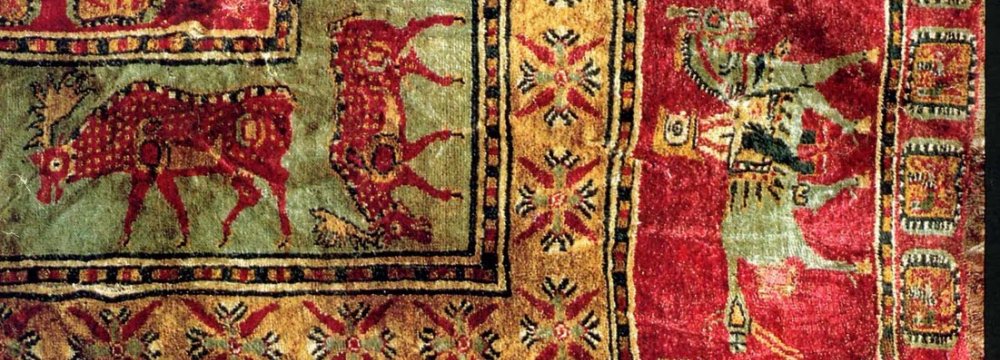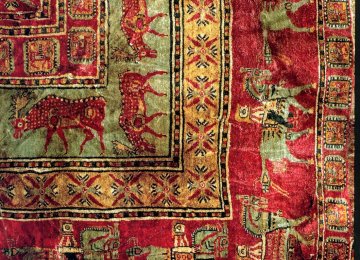The Carpet Museum of Iran - located in Tehran, besides Laleh Park, founded in 1976, exhibits a variety of the greatest Persian carpets from the 18th century to date. On display are more than 135 carpets from Kashan, Kerman, Isfahan, Tabriz, Yazd, as well as the cities of Khorasan and Kordestan provinces. A copy of the "Pazyryk" carpet is also included.
It is not absolutely clear where or when the world's first carpet was woven. Nomads, to cover their tent floors, were possibly the first to weave rugs, reports Iran View portal.
"Pazyryk" is said to be the world's oldest carpet discovered by Sergei Rudenko, a Russian archeologist in 1949, in a frozen Scythian temple along with some other ancient objects, dating back to 2500 years ago, in Pazyryk valley of the Ukok plateau in the Altai Mountains, Siberia, south of the modern city of Novosibirsk, Russia.
Features
The Pazyryk rug is knotted tufted wool with live colors of dark red, green, blue, yellow, and light orange colors, about 2 sq. m. in dimension.
Designs are mostly equestrian, grazing deer, mythical beast with eagle's head and lion's body, and flowery edges.
While examining structures and patterns of the carpet, Rudenko discovered a close similarity with sculptures of Persepolis. Many researchers believe that it dates back to Parthians and Medes.
Persian Symbols
"Arranged chain-like men and beasts in certain spaces, obviously remind us of Achaemenid and Assyrian styles. Decorating horse tail and foretop is also a Persian tradition. Stablemen pace on the horse's left while their right hand is on its neck both in Persepolis statues and Pazyryk", Rudenko wrote in his book, The frozen tombs of Siberia: the Pazyryk Burials of Iron-Age Horsemen.
Design motifs typically resemble those from the ethnic group of Lor. Type of the knots and one 4-star row at the center is similar to Lorestan's archeological objects, dating back to 4th and 5th centuries.
The deer design in Pazyryk, is obviously the yellow deer known as Persian Fallow Deer or Mesopotamian Fallow Deer, Rudenko recalled.
The original Pazyryk is now preserved in the Russian Hermitage Museum. Iran Carpet Company wove two carpets copying the original in 1976, one of which is displayed at the carpet museum in the Capital.





